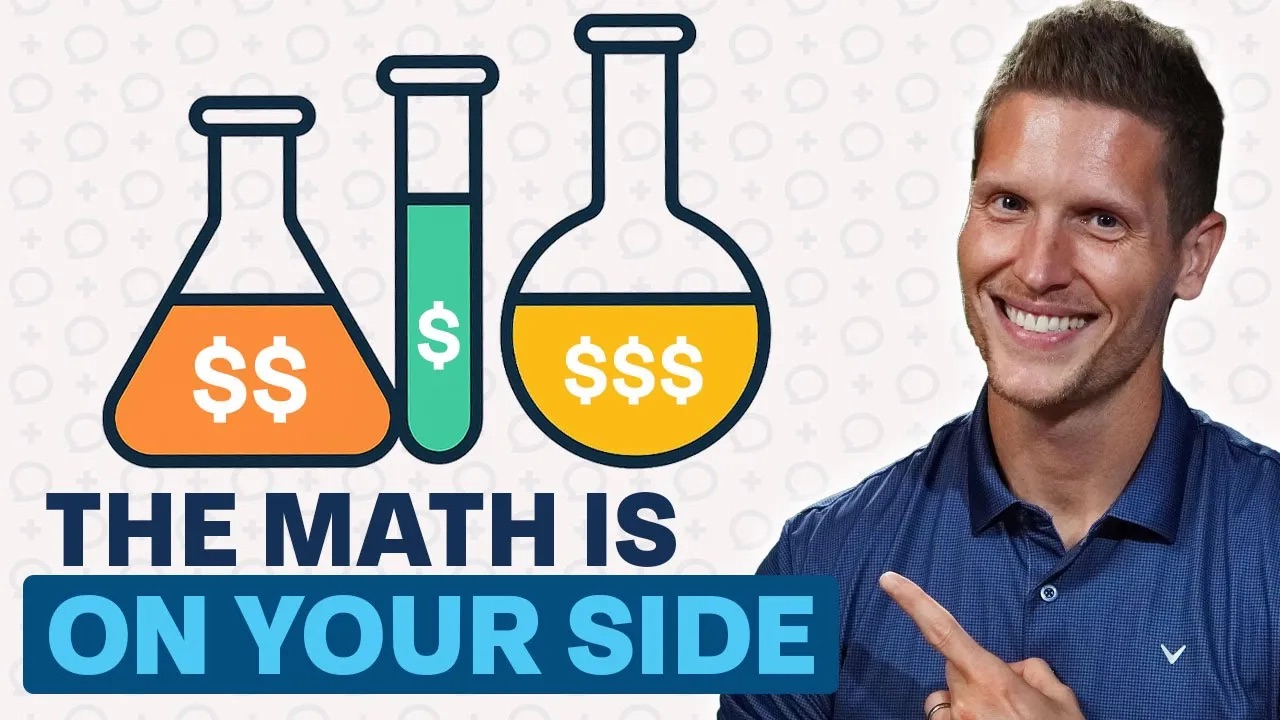Now, let's talk about what we can do as the employee and participant. Well, a lot of people don't realize there are different 401k contribution types. We just shared this statistic: 80 percent of 401K plans right now have a Roth option available, but less than 20 percent of folks are taking advantage of it. And we think perhaps the reason is they don't know what that means. So let's uncover that, let's talk about what that means.
The first type of 401k contribution, which has been around the longest and is the most familiar to most people, is a pre-tax 401k contribution. I'm going to elect to take some of my paycheck, and I'm going to put it into my 401k, and it's going to drop my taxable income. I'm going to get a tax benefit this year. My contribution goes in pre-tax, my dollars then grow tax-deferred, and ultimately when I go to pull that money out in retirement, that's when I'm going to pay tax on those contributions. This is the one that's been around since the beginning of 401k. Yeah, and this one is ideal for somebody who's in a higher income tax situation. You think that when you retire, taxes are going to be lower. You like taking the deduction now versus taking it later or getting the tax-free growth. This is traditional, and it's the oldest one.
If you're a younger person, you're probably going to want to take a look at this next provision because it allows you to potentially become a completely tax-free millionaire. That one just gets me tingly just thinking about it because if you think about the fact that when you retire, you're going to be able to pull that money out of those accounts and pay no income taxes on it, that's powerful stuff. That means all that compounding growth, all the wealth multiplier when I talk about one dollar becoming 88, all of that could completely be tax-free. That 87 dollars of growth could be completely tax-free. But hey, don't overlook the pre-tax because it is one of those things. If you get into a high-income tax situation, you'll want to know all your options. And we even have a little rule of thumb that's worth sharing. If you're someone and you look at your marginal federal bracket and your marginal State bracket, and you're below 25 percent, you add the two up, and it's less than 25 percent, there's a really good chance that Roth makes the most sense for you. Again, you're not going to get a tax benefit this year; you're going to put money in the 401K, but you're still going to pay tax on it. It also is going to grow tax-deferred, but then, assuming that certain qualifications are met when you pull it out, it's completely tax-free. So below 25, we think Roth makes a lot of sense.
But if you add up your marginal federal rate and your marginal State rate and you're above 30 percent, well, then that current year tax benefit is so valuable that it's really hard to walk away from. You can think about every dollar you put in your 401k is almost like a 30 percent rate of return because of your tax savings. So if you're above 30, we really think that pre-tax might make a lot of sense. And then if you're somewhere in the middle, if you're in that 25 to 30, it gets a little gray. Yeah, it's one of those things where you have to pay attention to what state you live in, what your state income taxes are, and also what happens after you retire.
I had somebody send me a tweet and an article; someone who I think was poo-pooing the concept of 401k investing altogether. I had to quickly reply, 'Look, I love this person's research. They're very analytical, they do really good work. However, if you read into the assumptions, they were keeping tax rates the same as when you work and when you retire. That's not always the case because a lot of times, when you retire, you leave behind your big earned income, your salary, your wages. If you're making a few hundred thousand dollars or six figures, you can imagine that when you walk away from that, you're probably going to drop into a lower tax rate.'
The other thing that comes into play is that a lot of states love retirees to move into their communities because they don't have kids that go to school, and they tend to vote. There are a lot of reasons why they're making a big push to try to get retirees to move there, so they will incentivize it also in their tax policy. We come from the state of Georgia originally. The state of Georgia does not tax Social Security; it doesn't tax it, and it puts a huge exemption on it. At the time I left, it was like thirty-five thousand dollars per person. I think it's much higher now. Where all we're 1099-R type retirement income is completely tax-free. So there's a really good chance that, in retirement, you might potentially pay a lower tax rate. That's why we always say, do the analysis like Bo just shared, look at your tax rates, look at your age, look at the benefits each one of these contribution types provides. Because everyone, just like you have a fingerprint, your retirement situation is going to be unique, and you need to know all the variables. Don't just go read a blog post and say, '401ks, why would I do that?' Make sure you understand the unique things that make you special and how that applies to your financial life.
All right, Brian. Most shows would stop there. Yeah, most folks, when they talk about 401K contributions, it's binary, it's pre-tax Roth, ones and zeros. However, we like to go a little bit beyond common sense. I hear almost, it's almost like the great white shark. That's it. You got it. The apex predator. The after-tax contributions. Now look, you have to. I gotta tell you, if you find out that you have after-tax contributions eligible in your retirement plan, you know you have a nerd somewhere in that C-suite that has done their research and heard about that apex predator of the after-tax Roth mega-Roth conversion-up opportunity. We've seen this with Toyota and some others that we've done some work for. And it's one of those interesting things. Look and see what your benefits are. You might have an opportunity to load up that Roth account more than most people realize.
So, what is an after-tax 401k contribution? Well, it sounds a lot like Roth, but it's not the same. One of the unique parts of after-tax contributions is that they're not subject to the same salary deferral limit. So where we said you can only put in $22,500 in the pre-tax bucket or the Roth bucket, if you have the income to substantiate it, you can actually take your after-tax contributions all the way up to the section 415 limits.
You can go all the way to $66,000 of after-tax 401K contributions. Now, when you put the money in there, you don't get a current-year tax benefit. The money that goes in is already taxed, so that's $66,000 or whatever the number is that sits there. Well, then all the earnings on top of that grow tax-deferred. When you go to pull that money out, you don't pay tax on the contributions you put in. You do pay tax on the earnings, unless, like Brian said, your plan has a unique structure where you can do Mega backdoor Roth conversions. You can essentially roll those after-tax contributions into a Roth IRA or convert them to Roth inside the plan and completely tax-free. Get $10, $20, $30,000 into your Roth buckets - a huge, huge benefit. Make sure you understand if this is available inside of your plan. Don't just assume that when it comes to making 401K decisions, it's pre-tax or Roth and stop there. If you see that third option, know that there's something unique about your plan that you ought to dig into. It's probably worth you looking into some more of our content on the Mega backdoor Roth. We've done other videos on this. Also, this is one of those measure-twice-cut-once. You might want to have a financial advisor that helps to make sure you don't fall into a trap or mess up your employer's contributions because you did it wrong. A lot of steps in this, so pay attention. Do it right. But it's still kind of cool to know what's even available out there to you.
If you want to know how powerful your dollar bills are, check out our
Wealth Multiplier here.













